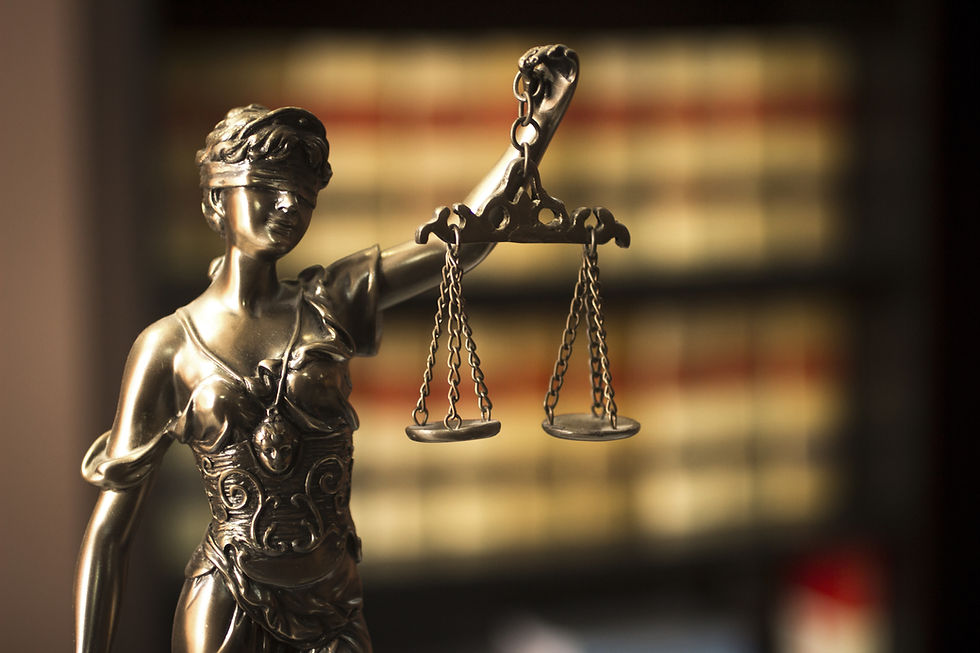Ruling in the Padmanabhan Kishor’s case in context of “proceeds of crime”
- pranavuchil5
- Oct 2
- 4 min read
The Supreme Court of India recently addressed a significant question: can a bribe-giver be held liable for money laundering under the Prevention of Money Laundering Act, 2002 (PMLA)? This question arose in the case of Directorate of Enforcement Versus Padmanabhan Kishore. The case involved an individual accused of bribing a public servant. While his involvement in bribery was not disputed, the question was whether he could also be prosecuted under the PMLA.
The High Court of Judicature at Madras had initially quashed the PMLA proceedings against the respondent, reasoning that the money was untainted while in the respondent’s possession and only became tainted upon receipt by the public servant. The High Court argued that the respondent did not engage in the process of projecting the bribe money as untainted property, which is a key element of the money laundering offense.
However, the Supreme Court overturned this decision. It ruled that the respondent’s actions fell under the definition of “proceeds of crime” and “money laundering” as defined in the PMLA.
The court's reasoning centered on the following points:
Definition of "proceeds of crime": The PMLA defines "proceeds of crime" as any property obtained directly or indirectly from criminal activity related to a scheduled offense. Bribery under the Prevention of Corruption Act, 1988 (PC Act), is a scheduled offense. Therefore, the bribe money, even while in the giver's possession, qualifies as "proceeds of crime."
Involvement in the process of money laundering: The court stated that the act of giving a bribe itself constitutes involvement in the process of money laundering. This is because the bribe giver, with the intent to bribe, actively participates in an activity connected to the proceeds of crime, enabling the money to become tainted.
Wide scope of Section 3 of the PMLA: Section 3 of the PMLA criminalizes any individual knowingly assisting or participating in any process or activity connected to the proceeds of crime, including possession or acquisition. The court held that handing over money with the intent to bribe falls under this definition.
Therefore, the Supreme Court found the respondent liable for money laundering and reinstated the PMLA proceedings against him. This judgment clarifies that individuals involved in bribery can be prosecuted under the PMLA, even if they are the givers of the bribe.

FAQ: Directorate of Enforcement Versus Padmanabhan Kishore
1. What was the case about?
This case involved an appeal to the Supreme Court of India challenging a Madras High Court decision. The respondent, Padmanabhan Kishore, was accused of bribing a public servant, Andasu Ravinder, with ₹50,00,000. While charges were filed under the Prevention of Corruption Act, 1988, the Enforcement Directorate also filed a complaint under the Prevention of Money Laundering Act, 2002 (PML Act). Kishore challenged the PML Act proceedings in the High Court, which ruled in his favor. The Directorate of Enforcement then appealed this decision to the Supreme Court.
What was the basis of the respondent's challenge to the PML Act proceedings?
Kishore argued that the money he gave, while in his possession, could not be classified as "tainted money" or "proceeds of crime." He claimed it only became tainted after being received by the public servant, thereby absolving him of any connection to money laundering.
What was the High Court's reasoning in quashing the PML Act proceedings?
The High Court agreed with Kishore's argument. It stated that the ₹50,00,000 could only be considered "proceeds of crime" after Andasu Ravinder accepted it as a bribe. Since the CBI intervened before Ravinder could project the money as untainted, the High Court found prosecuting Kishore under the PML Act to be "misconceived."
How did the Supreme Court define "proceeds of crime"?
The Supreme Court referred to Section 2(1)(u) of the PML Act, which defines "proceeds of crime" as any property obtained directly or indirectly by any person as a result of criminal activity related to a scheduled offense. This includes property derived not only from the scheduled offense itself but also from any criminal activity related to it.
What was the Supreme Court's view on the respondent's involvement under Section 3 of the PML Act?
The Supreme Court disagreed with the High Court's interpretation. It argued that Kishore's intent to bribe the public servant formed well before the actual exchange of money. This intent, coupled with his action of handing over the money, constituted active participation in a process connected with "proceeds of crime," specifically related to possession and acquisition. Therefore, his actions fell under the purview of Section 3 of the PML Act.
What was the final verdict of the Supreme Court?
The Supreme Court overturned the High Court's judgment, allowing the appeal by the Directorate of Enforcement. The court found that Kishore could be held liable for offenses under the PML Act and should continue to be a part of the legal proceedings in the case.
Did the Supreme Court definitively rule that Kishore was guilty?
No. The Supreme Court emphasized that its observations were preliminary and based on the assumption that the prosecution's allegations were true. The final determination of guilt would be decided based on the merits of the case presented at the appropriate stages of the legal process.
What was the significance of this judgment?
This judgment clarified the interpretation of "proceeds of crime" and the scope of Section 3 of the PML Act. It established that individuals involved in offering bribes, even before the money changes hands, can be held liable for money laundering offenses if their actions are proven to be connected to the generation of "proceeds of crime."


